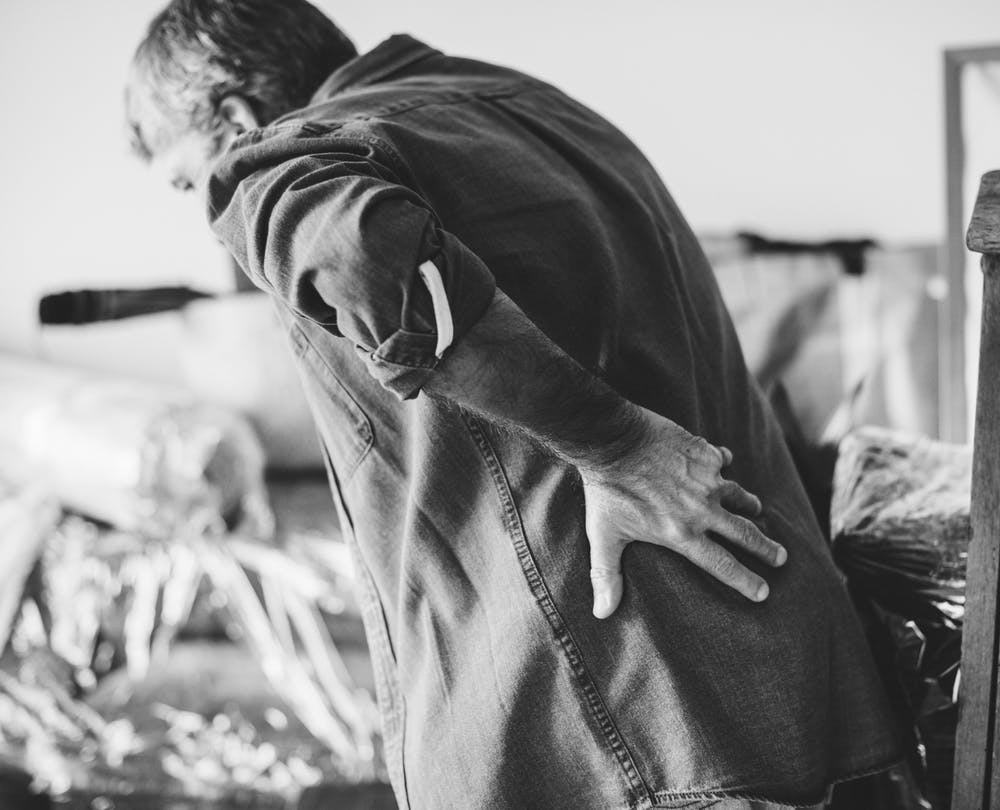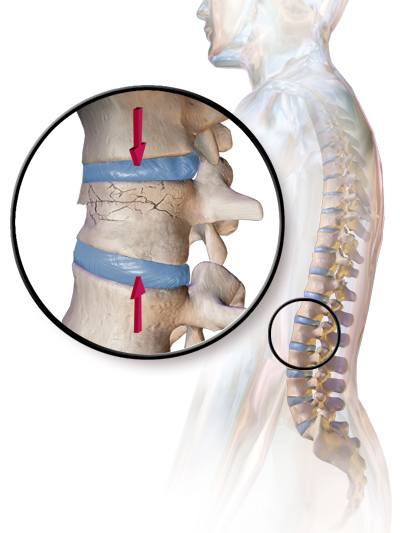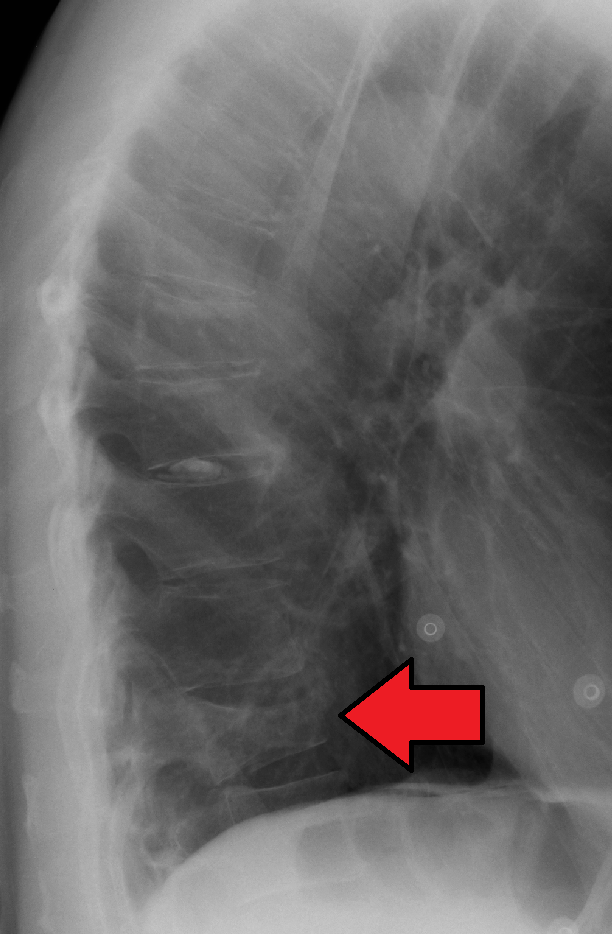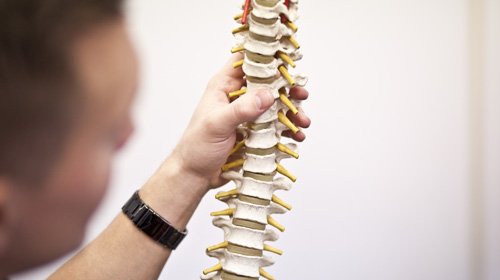|
BOOK NOW |
ASK ABOUT YOUR PAIN |
Home > Blog > Physiotherapy > Conditions > Spinal Physiotherapy > Spinal Compression Fractures Physiotherapy
Spinal Compression Fractures Physiotherapy

A compression fracture in the spine occurs when our spinal bones which are called vertebrae (small bones) that form the spine collapse or break.
These type of spinal fractures occur most commonly in
- people who have osteoporosis
- women over the age of 50 who are postmenopausal
- or any individuals over the age of 60 who may have weakened bones (such as in osteopenia or low bone mass)
- spinal compression fractures can also occur when cancer affects the spine.
Approximately 700,000 cases of spinal compression fractures per year occur in the United States due to osteoporosis.
It is estimated that 25% of women who are postmenopausal in the United States have had a vertebral compression fracture due to weakening of the bones from changes in hormones that occurred during this period of their lives.
Our senior physiotherapists help people with spinal compression fractures
- reduce their pain
- improve their strength, flexibility, and overall function
What are Spinal Compression Fractures?

The entire spine is made up of 24 bones, called vertebrae, and they are grouped into different segments, which are:
- 7 cervical (neck) vertebrae
- 12 thoracic (upper and middle back) vertebrae
- and 5 lumbar (lower back) vertebrae
Compression fractures occur most commonly in the middle back or thoracic spine in the T10, T11, and T12 vertebrae, and in the lower back or lumbar spine at the L1 vertebra.
If or when our spinal bones are weakened, even a simple activity such as bending to lift an object, twisting, or even coughing, laughing, or sneezing can cause a compression fracture!
These small compression fractures can gradually cause the spine to lose height and stability, and can weaken the entire spine.
Compression fractures often cause the bone to break down in the front area of a vertebra, while the back portion of the vertebra remains solid. This frontal breakdown causes the upper spine to round forward, a condition known as thoracic hyperkyphosis, also called a “dowager’s hump.”
A spinal compression fracture also may be caused by trauma to the spine such as
- a car accident
- a hard fall
- a fall from a height of more than 15 feet landing on the feet
- or a blow to the head
Spinal physiotherapy begins after the compression fracture has been cleared as stable by a physician.
Our senior physiotherapists help people with spinal compression fractures
- reduce their back pain
- improve their flexibility,
strength, and overall function
- reduce the risk of falling to help lessen the chance of future spine fractures
How Does a spinal compression fracture Feel?
The symptoms of a spinal compression fracture are often overlooked, misdiagnosed and dismissed as common back pain that occurs with a muscle strain or with aging, which is inaccurate.
Unfortunately up to two-thirds (that's 67%!) of nontraumatic compression fractures of the spine go untreated.
If you are experiencing a spinal compression fracture, you may feel:
- Back pain that may be sudden or may worsen over time
- Pain, numbness, or paralysis that occurs in the legs
- Back pain that worsens with upright postures, such as standing and walking
- Pain felt with coughing, sneezing, laughing, or breathing deeply
- Back pain that relieves with lying down
- Pain and difficulty with bending or twisting
- Tenderness over a specific region of the spine
- A stooped-over posture
- Loss of overall height
- In severe cases: numbness, tingling, difficulty walking, loss of bowel and/or bladder control
How Is It Diagnosed?

Several diagnostic tests may be ordered by a doctor to determine if a spinal compression fracture has occurred. They may include:
- Spinal X-rays
- Bone density testing to measure the thickness of the bone
- CT scan or MRI imagery (in severe traumatic cases)
how our senior physiotherapists can help

We will perform a complete evaluation, including
- your past medical history
- any medications you may be taking
- and your current symptoms
Your regular activities of daily living will be discussed, so we can design a treatment plan specific to your personal needs and goals.
We will perform a physical examination of your spine. We may touch points along the spine to
- determine any areas of pain or tenderness
- and check your spinal movements; the strength in your spine, legs, and shoulders; and your balance
Surgery is rarely needed in cases of compression fracture.
It may take weeks or months after your diagnosis for the spinal compression fracture to heal. During the healing process, your orthopedic doctor may recommend that you wear a back brace for extra support, reduce your overall activity level, and even try a short period of bed rest, depending on the severity of the fracture.
During the healing process when your activity is limited, muscles in the core, hips, and back can become weak and this weakness can make it difficult to resume your regular activities, and the weakness can put you at greater risk for falls.

Oursenior physiotherapists can help you regain the strength and mobility that you may have lost while the fracture healed. Your treatment may include:
Pain reduction
We may use different treatments and technologies to control and reduce your pain, and help you avoid the need for pain medications, including opioids.
We may use
- heat therapy
- cold therapy
- ultrasound therapy
- radio-frequency Indiba physiotherapy
- computerized spinal decompression traction
- manual therapy
- etc
Flexibility exercises
We may teach you gentle spinal stretching range-of-motion exercises for the neck, thoracic, lumbar, hip, and shoulder areas.
Strengthening exercises
We will prescribe gentle strengthening exercises to help stimulate your bone strength. Exercises may include upper- and lower-body, abdominal, and back muscle-strengthening activities.
Posture
We will teach you how to maintain safe posture and spinal positions to protect the vertebrae from undue stress when sitting, standing, walking, and even while you are sleeping.
You also will learn proper body mechanics for performing tasks at home, such as bending and lifting.
We also design an individualized home-exercise program, which you can continue after you have completed your spinal fracture physiotherapy program.
Fall prevention
We will teach you exercises to improve your balance and steady your walking gait to prevent falls. You may perform gentle exercises on a variety of surfaces. You also will learn ways to modify your home to make it safer and reduce the risk of a fall.
Can this Injury or Condition be Prevented?
There are several ways in which a spinal compression fracture can be prevented.
Our senior physical therapists recommend that you:
- Eat a well-balanced diet to promote bone health (can consult with our senior dietitian Claudia)
- Stop smoking.
- Keep alcohol consumption moderate.
- Take calcium and vitamin D supplements as recommended by your physician.
- Exercise regularly, including weight-bearing activities, such as walking and using light weights.
- Reduce fall risks with home modifications and balance exercises, as recommended by your physical therapist.
- Maintain proper posture and body mechanics when performing activities of daily living.
Spinal / vertebral compression fracture image by Blausen.com staff (2014). "Medical gallery of Blausen Medical 2014". WikiJournal of Medicine 1 (2). DOI:10.15347/wjm/2014.010. ISSN 2002-4436.